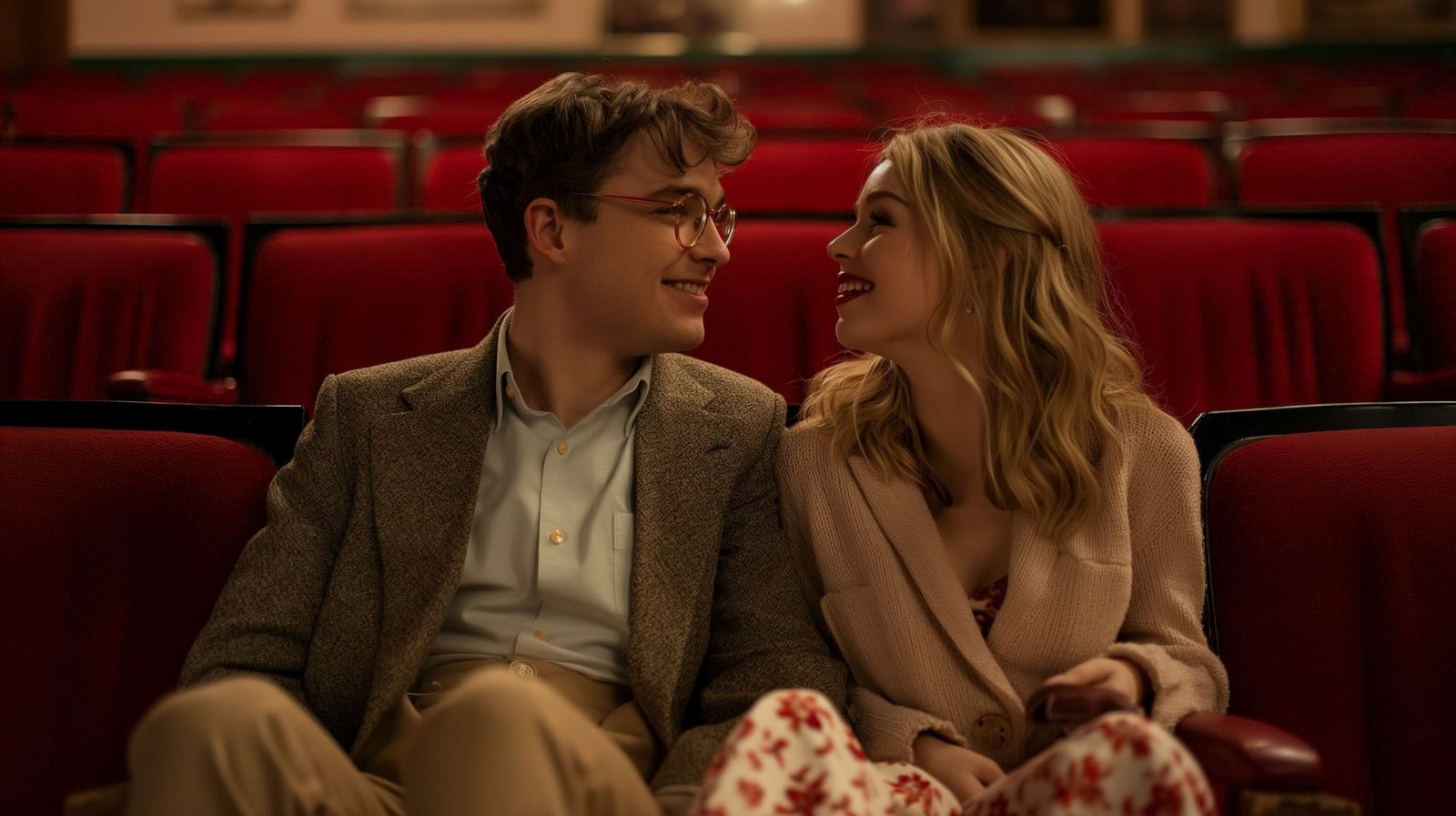Unveiling the Depths of Film Genres and Their Evolution
From Hitchcockian thrillers' pulse-pounding suspense to classic musicals' whimsical charm, cinematic genres have defined the filmmaking landscape and profoundly influenced the cultural zeitgeist.


Film genres are the invisible architecture of cinema, shaping audience expectations, guiding narrative choices, and influencing everything from set design to costume choices. From Hitchcockian thrillers' pulse-pounding suspense to classic musicals' whimsical charm, cinematic genres have defined the filmmaking landscape and profoundly influenced the cultural zeitgeist.
But genres are far from static. They've undergone a fascinating evolution throughout cinematic history and pushing cinematic boundaries forever altering the storytelling landscape.
Bring your genre-driven story to life with Filmustage!
Streamline script breakdowns, budgeting, and scheduling to focus on storytelling while ensuring a smooth production process.
The Evolution of Genres in the History of Cinema 🎥
Film genres are broad categories that link storytelling to common themes, stylistic elements, and audience expectations, but were not always the clearly defined boxes they seem to be today.
Early Genre Shooting (1985-1930s)
The earliest films, silent and short, defied easy classification. However, by the 1910s, wide genre differences began to emerge. Westerns captivated audiences with stories about cowboys, sheriffs, and gunfights (f.ex. the films of Gilbert M. “Broncho Billy” Anderson, an American producer, director, and actor, the founder of this genre).
Also in those days, such key film genres as horror (“The Cabinet of Doctor Caligari” (1920), drama and comedy (remember the films of the famous Charlie Chaplin), fantasy (a series of German films about the Nibelungen), melodrama (with the brilliant actress Mary Pickford) arose and developed.

Golden Age (1930s-1950s)
The advent of sound in the late 1920s ushered in Hollywood's Golden Age, a period characterized by the dominance of the studio system and the rise of major genres.
Gangster cinema exploded with films such as "Scarface" (1932), which featured cult performances and gritty depictions of organized crime. With the development of this genre, Hollywood responded to the rampant crime during the Great Depression.
Musicals offered escapism and glamor (think of the benchmark "The Wizard of Oz" (1939)).
Film noir, a darkly lit world of crime and moral ambiguity, flourished with classics like "The Maltese Falcon" (1941) and "Double Indemnity" (1944), which featured cynical detectives and femme fatales.
Genres like the screwball comedy, with its fast-paced dialogue and crazy situations, offered audiences a comedic outlet during the Great Depression, and films like "Bringing Up Baby" (1938) showcased the brilliance of comedy duos like Katharine Hepburn and Cary Grant.
The Era of Authors (1960–1970s)
The 1960s and 1970s saw a shift in filmmaking. The weakening of the studio system and the appearance of auteur directors such as François Truffaut and Jean-Luc Godard paved the way for experimentation and genre-bending. The French New Wave emerged, blurring genre boundaries and injecting a dose of social commentary with films such as Truffaut's "Jules and Jim" (1962), which mixed elements of romance, drama, and coming-of-age stories.
Genre Renaissance (1980s–present)
The second half of the 20th and the beginning of the 21st centuries marked a new period of genre hybrids. Technological advances such as computer graphics allowed for revolutionary visual effects that helped science fiction action films such as "The Terminator" and "The Matrix" flourish.
It is also worth mentioning Tarantino as a master of mixing genres, which is perfectly reflected in his epic "Pulp Fiction" (1994).
Crime dramas such as "Seven" (1995) incorporated neo-noir elements, while superhero films moved beyond comic books to become critical and commercial darlings, with Christopher Nolan's "The Dark Knight" (2008) redefining the genre's potential.
Decoding the Genre Manual: Exploring Conventions and Audience Expectations 📚
Film genres function as cinematic blueprints, offering recognizable patterns and images that define audience expectations. From narrative structures to visual aesthetics, these conventions create a common language between filmmakers and audiences. But the beauty of the genre lies not only in meeting expectations but also in subverting them, creating surprises, and pushing the boundaries of storytelling.
Setting the Stage 🎬
Each genre establishes a set of conventions that audiences expect.
For example, action films typically pit the protagonist against a formidable antagonist, leading viewers through a series of exciting chase scenes, complex fight choreography, and high-stakes encounters. Films such as "Die Hard" (1988) exemplify this formula, placing the main hero John McClane in increasingly dangerous situations.
Romantic comedies, on the other hand, follow a familiar storyline: boy meets girl, obstacles arise, and love conquers all. However, some filmmakers choose to defy this expectation. "When Harry Met Sally" (1989) explores the complexities of friendship between a man and a woman without following the classic plot development of the genre.
Visual Storytelling 🎥
In addition to narrative structure, genres establish visual conventions that shape audience perception. Westerns often use wide shots of vast landscapes, evoking a sense of isolation and the vastness of the frontier. Think back to the iconic Monument Valley setting of John Ford's classic Westerns. Horror films, on the other hand, use darkness, suspenseful sound design, and jump scares to create a sense of unease and suspense. A prime example of this is the masterful use of shadows and suspenseful music in "The Shining" (1980) and Hitchcock horror movies.
Changing Genres and the Art of Surprise 🌟
While conventions help viewers navigate the cinematic landscape, the most innovative filmmakers use them as a springboard for creativity.
Neo-noir films such as "Blade Runner" (1982) take the classic noir style—dark lighting, voiceover, moral ambiguity—and infuse it with a futuristic setting and science fiction elements.
Quentin Tarantino reimagines the revenge film in "Kill Bill: Vol 1" (2003), weaving elements of martial arts films and spaghetti westerns into a stylish and brutal narrative.
✨ The masterpieces as mentioned earlier serve as evidence that clever disruption of genre conventions can produce surprise and deeper emotional impact.
Blurring the Lines: Hybrid Genres Reshaping Cinema 🔀
As the art of filmmaking has evolved, the boundaries between traditional genre categories have become increasingly blurred, giving rise to a new era of hybrid and innovative genres.
🎬 Hybrid Film Genres
Hybrid film genres feature elements from different genres. They can include elements of comedy and drama, horror and science fiction, action, and thrillers. Examples of hybrid genres include:
- Docufiction: Real people in the circumstances, but the action itself is staged ("Close-Up" (1990)).
- Film essay: A combination of documentary footage with the author's commentary and reflections ("Nostalgia for the Light" (2010)).
- Genre hybrid: mixing elements of different genres, for example, Ethnofiction (ethnography and fiction) or Comedy-Horror (comedy and horror).
💡 Innovative Film Genres
Innovative film genres represent new and traditional forms of storytelling that challenge formation. These may include:
- Interactive cinema: Viewers can influence the course of events in the film ("Black Mirror: Bandersnatch" (2018)).
- Virtual reality: Films that create a feeling of complete immersion in the virtual world.
- Artificial Intelligence: Movies created using artificial intelligence ("Frost" (2013)).
🌟 One shining example of this hybrid approach is the critically acclaimed film "Everything Everywhere All at Once", directed by Daniel Kwan and Daniel Scheinert. This genre-bending extravaganza skillfully interweaves elements of science fiction, martial arts, family drama, and absurdist humor, creating a mind-bending cinematic experience that challenges our perceptions of reality and human connection.
Embracing Artistic Freedom: Transcending Boundaries 🎨🌈
The rise of hybrid and innovative genres has captivated audiences and has opened new frontiers for artistic expression. By transcending the confines of genre conventions, filmmakers have found the freedom to explore complex themes, experiment with non-linear storytelling, and delve into the depths of human experience in ways that defy traditional categorization.
🌳 Take, for instance, the critically acclaimed film "The Tree of Life" (2011), directed by Terrence Malick. This visually stunning and philosophically rich work defies easy classification, blending elements of drama, fantasy, and philosophical meditation to create a profound exploration of the human condition and our place in the cosmos.
Cultural Impact and Future Trends 🌍🔮
Film genres have a profound impact on culture. Westerns romanticized the American West, while action films often reflect contemporary anxieties and geopolitical tensions.
Genres like science fiction inspire us to consider the future and our place in the Universe.
Horror films, with their exploration of the macabre and the monstrous, delve into our deepest fears and anxieties, serving as a cultural pressure valve for societal unease.
Looking ahead, the future of film genres is likely to be one of continued innovation and hybridization.
🌟 Technological advancements may give rise to entirely new genre categories, while established genres will continue evolving and surprise audiences.
🌟 Social commentary will undoubtedly remain a driving force in genre evolution.
🌟 As environmental issues rise in prominence, expect to see an increase in eco-thrillers and climate change-themed narratives. The rise of artificial intelligence will likely inspire a new wave of science fiction films exploring the ethical and existential implications of technology exceeding human control.
🌟 Diversity in storytelling will be another key trend. Genres traditionally dominated by white male protagonists will give way to more inclusive narratives featuring diverse characters and perspectives. This shift reflects the changing demographics of audiences and the increasing demand for stories that represent the richness of the real world.
A prime example of this trend is the critically acclaimed film "Moonlight", directed by Barry Jenkins in 2016. This genre-defying masterpiece seamlessly blends elements of coming-of-age drama, LGBTQ+ narratives, and poetic realism, offering a nuanced and deeply personal exploration of identity, sexuality, and the pursuit of self-acceptance.
Filmustage: Empowering Filmmakers to Explore the Boundaries 🤖
Filmustage is a powerful tool to streamline the creative process and foster innovation as filmmakers continue to push the boundaries of genre and storytelling.
By automating script breakdowns, scheduling, and asset management, Filmustage empowers filmmakers to focus on the visionary aspects of their craft, freeing them to explore the limitless possibilities of genre-defying narratives.
💫 Through its AI-driven features and collaborative workflow, Filmustage helps filmmakers navigate the complexities of production, ensuring that their creative vision remains at the forefront, even as they venture into uncharted cinematic territories.
With Filmustage as their trusted companion, filmmakers can confidently embrace the challenges and opportunities presented by the ever-evolving world of film genres.
From Breakdown to Budget in Clicks
Save time, cut costs, and let Filmustage’s AI handle the heavy lifting — all in a single day.